Planning - The Silent Killer of Free Range Growth
Published on : 29 Aug 2025
 If there was ever proof that planning has become the number one brake on our industry, it came in last week’s BFREPA webinar.What was billed as a technical session on planning problems quickly turned into something more raw: an outpouring of frustration from producers who are doing everything right, yet are blocked at every turn by a system that seems set against them. Our members didn’t hold back. Questions came thick and fast: Can I rebuild after a fire without starting from scratch? Why am I penalised for enhancing biodiversity? How can I plan expansion when no council seems to play by the same rules? The discussion, hosted by Gary Ford, BFREPA’s Head of Policy and Producer Engagement, drew on the expertise of seasoned consultants Ian and Sam of Harrison Pick. Their answers were practical but often laced with disbelief. As one of the UK’s leading specialist planning consultancies, handling around 60% of all free range poultry applications, their perspective carries real weight. Yes, you can theoretically convert an old cattle shed into a poultry house with minimal fuss. But if you want to build a new free-range unit in a nutrient neutrality catchment? Forget it. Nobody has succeeded since the rules came in three years ago. And in Wales? No poultry units approved since February 2022. That’s not just a statistic, it’s a stark reality: free range in Wales has seen no growth for over two years. The most striking part of the evening was how often common sense was absent. Biodiversity Net Gain (BNG), meant to make developments greener, is now penalising farmers for too much gain. In some instances, if you deliver more than the minimum 10% uplift, you face legal agreements and annual monitoring fees, with councils and county ecologists considering this a “major gain.” It’s a perverse outcome: punishing those who are doing the most to improve the countryside. Nutrient neutrality was described by Harrison Pick as a “don’t even bother” situation for free range systems. Because our hens range, councils treat us as an unsolvable risk. That shuts the door on growth for the very sector that delivers the highest welfare standards and the strongest connection with the public.And even if, by some miracle, you manage to navigate the nutrient neutrality minefield - which Sam and Ian maintain is virtually impossible - the next hurdle is already looming: ever-tightening air quality regulations. These rules, being applied with increasing rigidity, are now starting to trip up applications that would have sailed through just a few years ago. Another hard truth came out: even if every report is commissioned, every scrubber fitted, every box ticked, applications can still be thrown out. Why? Because elected committees bow to local pressure. Fifty local objections carry more weight than 10,000 form letters from overseas campaign groups, but the outcome is the same: uncertainty, delay, and more cost piled onto members. Appeals, once a reliable safety net, are now slow, inconsistent and draining. As Harrison Pick’s consultants reminded us, political calculation too often overrides technical evidence. That is not just inefficient, it is destabilising for farm businesses trying to plan ahead. You can watch the whole webinar again on the BFREPA YouTube channel.
If there was ever proof that planning has become the number one brake on our industry, it came in last week’s BFREPA webinar.What was billed as a technical session on planning problems quickly turned into something more raw: an outpouring of frustration from producers who are doing everything right, yet are blocked at every turn by a system that seems set against them. Our members didn’t hold back. Questions came thick and fast: Can I rebuild after a fire without starting from scratch? Why am I penalised for enhancing biodiversity? How can I plan expansion when no council seems to play by the same rules? The discussion, hosted by Gary Ford, BFREPA’s Head of Policy and Producer Engagement, drew on the expertise of seasoned consultants Ian and Sam of Harrison Pick. Their answers were practical but often laced with disbelief. As one of the UK’s leading specialist planning consultancies, handling around 60% of all free range poultry applications, their perspective carries real weight. Yes, you can theoretically convert an old cattle shed into a poultry house with minimal fuss. But if you want to build a new free-range unit in a nutrient neutrality catchment? Forget it. Nobody has succeeded since the rules came in three years ago. And in Wales? No poultry units approved since February 2022. That’s not just a statistic, it’s a stark reality: free range in Wales has seen no growth for over two years. The most striking part of the evening was how often common sense was absent. Biodiversity Net Gain (BNG), meant to make developments greener, is now penalising farmers for too much gain. In some instances, if you deliver more than the minimum 10% uplift, you face legal agreements and annual monitoring fees, with councils and county ecologists considering this a “major gain.” It’s a perverse outcome: punishing those who are doing the most to improve the countryside. Nutrient neutrality was described by Harrison Pick as a “don’t even bother” situation for free range systems. Because our hens range, councils treat us as an unsolvable risk. That shuts the door on growth for the very sector that delivers the highest welfare standards and the strongest connection with the public.And even if, by some miracle, you manage to navigate the nutrient neutrality minefield - which Sam and Ian maintain is virtually impossible - the next hurdle is already looming: ever-tightening air quality regulations. These rules, being applied with increasing rigidity, are now starting to trip up applications that would have sailed through just a few years ago. Another hard truth came out: even if every report is commissioned, every scrubber fitted, every box ticked, applications can still be thrown out. Why? Because elected committees bow to local pressure. Fifty local objections carry more weight than 10,000 form letters from overseas campaign groups, but the outcome is the same: uncertainty, delay, and more cost piled onto members. Appeals, once a reliable safety net, are now slow, inconsistent and draining. As Harrison Pick’s consultants reminded us, political calculation too often overrides technical evidence. That is not just inefficient, it is destabilising for farm businesses trying to plan ahead. You can watch the whole webinar again on the BFREPA YouTube channel.
